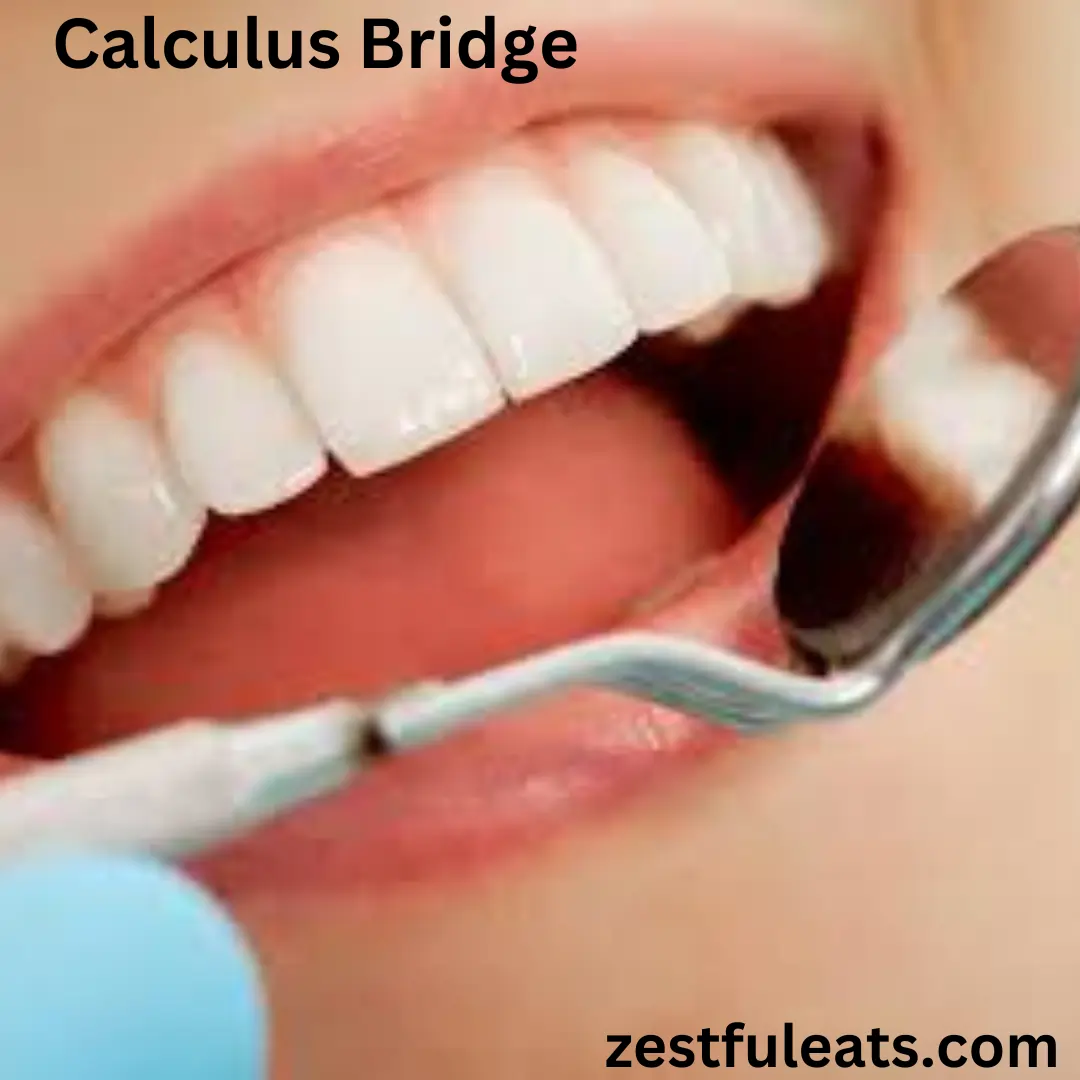Understanding Calculus bridge Buildup on Teeth
What Leads to Calculus Formation?
When you eat, a thin, sticky layer known as plaque forms on your teeth. If not cleaned promptly through brushing and flossing, this plaque can harden into tartar or calculus. Over time, this tartar can span across multiple teeth, creating what is known as a calculus bridge. To prevent potential harm to your teeth and gums, removal of this hardened calculus by a professional dentist is necessary.
Formation and Risks of Dental Calculus(Calculus bridge)
How Does Plaque Transform into Calculus?
Plaque, a sticky film, readily forms on your teeth shortly after consuming starchy or sugary foods. This residue interacts with oral bacteria, producing acids that break down the carbohydrates in your food and drinks. This mixture of carbohydrates, acids, and bacteria coats your teeth in a colorless plaque layer.

The presence of tartar is problematic as it extends beyond the teeth to the potentially staining and appearing tan or brown. This calculus not only affects the appearance of your teeth but also threatens the underlying gum tissue, leading to gum disease and tooth decay.
Appearance of Calculus Bridges
Variability in Tartar Buildup
The extent of tartar buildup differs significantly between individuals, which means a calculus bridge can appear uniquely in each person.
Typically, a calculus bridge appears as a brown or tan border along the gumline at the base of the teeth. In more advanced cases, this buildup can extend further into the gumline or up the tooth surface, impacting dental health and aesthetics.
Negative Outcomes of Dental Calculus
Halitosis: Plaque and tartar accumulation not only affects the appearance of your teeth but also leads to bad breath, a condition medically referred to as halitosis.
Gingivitis: This initial stage of gum disease manifests as redness and swelling of the gums, often with bleeding during brushing or flossing. Without intervention, gingivitis can evolve into periodontitis, a severe gum disease.
Receding Gums: As a form of periodontal disease, receding gums expose more of the tooth and create pockets where bacteria can settle, escalating the risk of further complications.
Cavities: Tartar creates a protective shield for bacteria against your toothbrush. As it combines with plaque, it can erode the enamel, leading to cavities by allowing bacteria and acid to penetrate the teeth.
Tooth Loss: Continuing neglect of dental calculus can progress to gum disease, potentially resulting in tooth loss.
Effective Removal of Calculus
Calculus bridges are too tenacious to be removed by regular brushing. They require professional cleaning by a dentist or dental hygienist. This process typically involves the use of tools such as a dental scaler, a hand-held instrument designed to meticulously scrape off tartar from the gumline.
Root Planing: Following scaling, a hygienist might smooth the root surfaces to prevent further tartar buildup, using both manual and ultrasonic instruments.
For extensive calculus, multiple sessions might be necessary to fully clean the affected areas, which could leave your gums tender for a short period post-cleanup.
Guarding Against Dental Calculus Formation
Maintaining excellent oral hygiene is crucial to prevent tartar accumulation and avoid the development of a calculus bridge.
Dental calculus can begin to form rapidly within days after plaque appears. To combat this, it’s essential to remove plaque promptly.
The American Dental Association (ADA) outlines several effective measures to ensure your oral health remains optimal and free from tartar:
- Brush your teeth twice daily using a fluoride toothpaste, dedicating 2 minutes to each brushing session.
- Perform daily interdental cleaning. This may involve flossing or using tools designed to eliminate particles between your teeth.
- Reduce intake of sugary beverages and snacks. Decreasing sugar consumption minimizes the chances for bacteria to interact with residual sugars and form plaque.
- Regularly visit a dentist for examinations. A dentist can detect early signs of conditions like gingivitis or tooth decay and provide personalized advice to enhance your dental care routine.

Research supports the benefits of using tartar-control toothpaste. A 2008 double-blind clinical trial and a 2013 review of over 30 studies indicate that toothpastes containing both fluoride and triclosan are effective in battling the bacteria found in plaque.
FAQS
What leads to the formation of calculus bridges?
A calculus bridge forms when tartar, also known as calculus, accumulates extensively. This buildup can connect to adjacent teeth, creating a solid ‘bridge’ of deposits. This explanation is provided by Gary Schlotterer, D.D.S., founder of Digital Dentistry at Southpoint in Durham, North Carolina.
Is a calculus bridge harmful?
Yes, a calculus bridge is detrimental to oral health. Besides being aesthetically displeasing, if not addressed promptly, it can cause significant dental issues. These include bad breath (halitosis), gum disease, cavities, receding gums, and ultimately, tooth loss.
How can you prevent calculus bridges?
Maintaining strong dental hygiene is essential to prevent the buildup of tartar and the formation of calculus bridges. Since tartar can begin to form within days of plaque development, it is crucial to regularly remove plaque to prevent it from hardening into calculus.
How does calculus form on teeth?
Calculus, also known as tartar, forms when plaque on the teeth is not removed and hardens over 2-3 days. The high mineral content in saliva further accelerates this process. Once formed, calculus creates a protective barrier for bacteria on the teeth.
Can calculus be removed?
Yes, calculus removal typically requires a visit to the dentist. Dental calculus can be stubborn and difficult to remove without professional help. Dentists use advanced and effective techniques to quickly eliminate calculus from the teeth.
